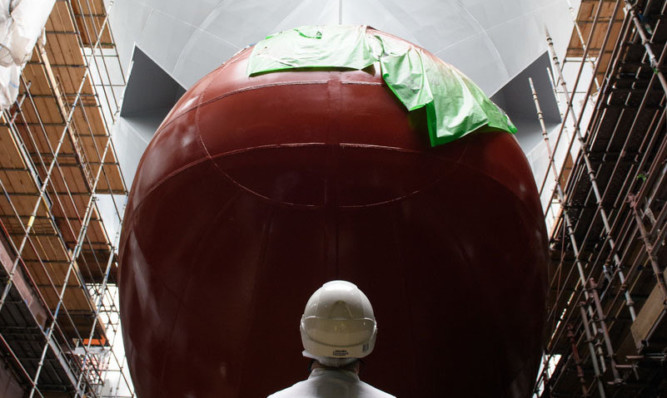The second Royal Navy flagship aircraft carrier, HMS Prince of Wales, has passed a significant milestone after the two halves of the ship were joined together in a record feat of precision engineering.
More than 26,500 tonnes of the forward half of the ship were mechanically skidded back 17 metres to join on to the 12,000-tonne “superblock” which makes up the rear of the vessel.
A specialised hydraulic system was used for the 10-hour operation at Babcock in Rosyth, Fife.
This resulted in a perfect joining of the two halves of the ship, with less than a 3mm tolerance down the centre line, the Aircraft Carrier Alliance (ACA) said.
The operation is believed to be a UK record in terms of the weight of the ship that was skidded.
Tom Niven, build and assembly manager for the ACA, said: “While we’ve completed a few of these skidding operations on the Queen Elizabeth Class carriers, this is the final operation of its type on the programme and the heaviest section anyone in the UK has had to move.
“It’s always a particularly delicate and precise procedure, demonstrating the high-level of engineering skills we have across the alliance.”
Angus Holt, HMS Prince of Wales delivery director, added: “To see more than 26,000 tonnes of ship skidded in the dry-dock is an amazing sight and a very proud moment for the alliance.
“The rate at which HMS Prince of Wales is coming together is also very gratifying, with the team doing a superb job in ensuring that we keep to our schedule.
“This will allow us to complete the assembly phase of the build by our target date of next year. It really is the turning point in our build programme.”
HMS Prince of Wales is the second of the new Queen Elizabeth Class aircraft carriers to be built for the UK, after the 65,000-tonne HMS Queen Elizabeth.
They are the largest British warships ever constructed, and can be used for a range of military activity from war fighting to providing humanitarian aid and disaster relief.
